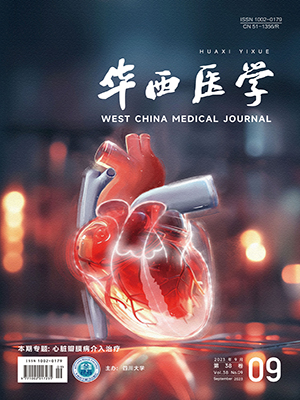【摘要】 目的 探討重型顱腦損傷的臨床特點和救治經驗。 方法 回顧性總結2002年1月-2008年12月所診治重型顱腦損傷96例的臨床資料。 結果 96例重型顱腦損傷患者,其中手術治療59例,非手術治療37例。按GOS評分,出院時恢復良好33例(34.4%),中殘15例(15.6%),重殘16例(16.7%),植物生存8例(8.3%),死亡24例(25.0%)。 結論 重型顱腦損傷仍然具有較高的病死率和致殘率,早期及時手術清除顱內血腫解除腦疝,早期氣管插管或氣管切開并呼吸機支持治療及其它積極恰當的綜合治療措施是搶救治療成功的關鍵;后期加強護理注重防治并發癥,可以最大可能挽救患者生命。
【Abstract】 Objective To explore the clinical characteristics of severe cranio-cerebral injury and its treatment experience. Methods The clinical data of 96 patients with severe cranio-cerebral injury from January 2002 to December 2008 were retrospectively analyzed. Results In 96 patients with cranio-cerebral, 59 had undergone the surgeries and the others had undergone the conservative treatment. According to the Glasgow outcome scale (GOS), 33 (34.4%) had a good outcome, 15 (15.6%) had moderate disability, 16 (16.7%) had severe disability, 8 (8.3%) had vegetative persistent and 24 (25.0%) died. Conclusion The mortality and morbidity rate of the patients with severe cranio-cerebral injury are high, we should clean out the intracranial hematoma and relieve cerebral herniation in time, performed early tracheal intubation or tracheotomy with respirator therapy, and other active and appropriate general therapies, and avoid complications via rehabilitation time intensify nursing to rescue the patients.
引用本文: 湯秉洪,覃宗明,楊明彬. 重型顱腦損傷臨床診治分析. 華西醫學, 2011, 26(1): 57-59. doi: 復制




